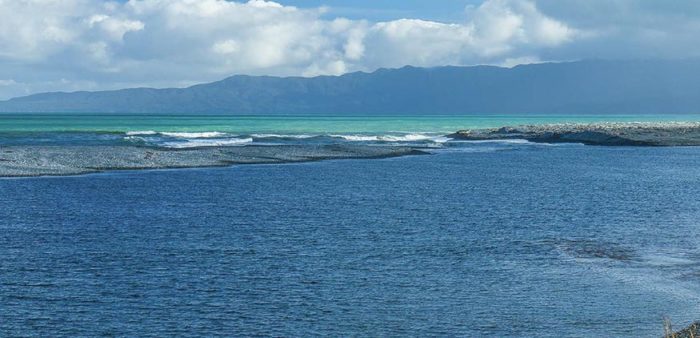As Maritime New Zealand informed, a kayaker who was fishing on a Southland river lost his life when he was dragged by the current out to sea across a gravel bar. Maritime New Zealand analyzes the incident and proposes lessons to be learned.
What happened
The man had taken his kayak to the river mouth that morning to go fishing, and had returned safely to the ‘crib’ for lunch. But when he headed out again about 3pm, he did not make it back.
[smlsubform prepend=”GET THE SAFETY4SEA IN YOUR INBOX!” showname=false emailtxt=”” emailholder=”Enter your email address” showsubmit=true submittxt=”Submit” jsthanks=false thankyou=”Thank you for subscribing to our mailing list”]
The alarm was raised when his friend went for a walk and found the man’s kayak floating in surf on the sea side of a large gravel bar separating the ocean and river mouth lagoon. A helicopter search located his body down the coastline.
He was wearing jeans, socks and a T-shirt, along with his buoyancy vest. There was no footwear, but he had been seen wearing gumboots when he went to his kayak.
The Coroner also found that the man was wearing inappropriate clothing for the environment and the activity. Cold water immersion contributes to fatalities, and denim and cotton provide little insulation.
The bar has a reputation for being dangerous, with at least one whitebaiter getting carried out to sea each year. There is often a marked fall between the lagoon level and sea levels, resulting in a strong current in the apparently calm lagoon.
Small vessels can easily be dragged to the ‘point-of no-return’ at the bar, without the occupants realising it. The strongest tidal flow was from 4pm that day, when the man had returned to the water.
While the lagoon was relatively protected from the strong south-west breeze, conditions on the bar were extremely dangerous. The river flow, strengthened by the outgoing tide, was pushing against the onshore wind, and this resulted to the waves of 4–6 metres present on the bar.
The man’s buoyancy vest had ridden up when his body was found. He was also some distance from his kayak, which was suitable for use only in sheltered waters.
In addition, the Coroner found that a proper lifejacket with a crotch strap may have helped save the victim’s life. A high-rated lifejacket keeps the wearer vertical in the water and able to breathe, even if they are unconscious.
The victim was not carrying any type of communication device to call for help. Maritime New Zealand noted that while an experienced lake and river kayaker, this area was new to the man.
- This man did not follow many basic safety precautions. He should have made enquiries about the local conditions, and understood the dangers around the river mouth and bar.
- A highest-rating, type 401, lifejacket is recommended. These have a collar to keep the wearer’s head supported and above water in an emergency, and a crotch strap to prevent the safety garment from riding up.
- Paddlers and boaties should have two forms of waterproof communication. For kayakers this could include a hand-held VHF radio, a cellphone in a waterproof lanyard bag, or a personal locator beacon (PLB).
- Waterproof communication devices should be attached to a lifejacket, on a lanyard, or stashed in a pocket.
- Kayaks are prone to capsize. To prevent hypothermia, paddlers should wear a wetsuit, or layer up with woollen or synthetic clothing, such as polar fleece.
- This type of recreational kayak was probably fit for the intended voyage within the lagoon, but not for the sea conditions at the river mouth. This model did not have a substantial keel or rudder, and it was not designed for efficient handling in turbulent waters.
- River bars are dangerous for larger vessels, let alone small paddle craft such as kayaks or jetskis. Anybody on the water near a bar is advised to research local conditions.































































